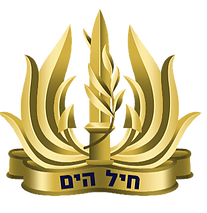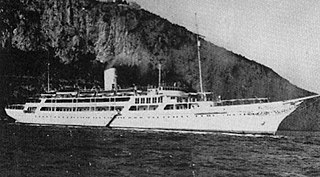
Several nations observe or have observed a Navy Day to recognize their navy.

The Israeli Navy is the naval warfare service arm of the Israel Defense Forces, operating primarily in the Mediterranean Sea theater as well as the Gulf of Eilat and the Red Sea theater. The current commander in chief of the Israeli Navy is Aluf David Sa'ar Salama. The Israeli Navy is believed to be responsible for maintaining Israel's offshore nuclear second strike capability.

The Egyptian Navy, also known as the Egyptian Naval Force, is the maritime branch of the Egyptian Armed Forces. It is the largest navy in the Middle East as well as Africa, and is the twelfth largest navy in the world. The navy protects more than 2,000 kilometers of coastline of the Mediterranean Sea and the Red Sea, defense of approaches to the Suez Canal, and it also supports for army operations. The majority of the modern Egyptian Navy was created with the help of the Soviet Union in the 1960s. The navy received ships in the 1980s from China and other Western sources. In 1989, the Egyptian Navy had 18,000 personnel as well as 2,000 personnel in the Coast Guard. The navy received ships from the US in 1990. US shipbuilder Swiftships has built around 30 boats for the Egyptian Navy including mine hunters, survey vessels, and both steel and aluminium patrol boats.

El Mahrousa, officially renamed for a period of time as El Horreya, is a super yacht that currently serves as Egypt's presidential yacht, and previously served as the country's royal yacht. It was built by the British ship building firm Samuda Brothers in 1863 at the order of Khedive Ismail Pasha and the ship was handed over to its Egyptian crew two years later.

HMS Whimbrel is the last surviving Royal Navy warship present at the Japanese Surrender in World War II. She was a sloop of the Black Swan-class, laid down on 31 October 1941 to the pennant number of U29 at the famed yards of Yarrow Shipbuilders, Scotstoun, Glasgow.

Farooq is a common Arabic given and family name. Al-Fārūq literally means "the one who distinguishes between right and wrong."

Yohai Ben-Nun was the sixth commander of the Israeli Navy and one of the founders of the Israeli Special Forces. Hero of Israel.

HMS Zealous was a Z-class destroyer of the Royal Navy built in 1944 by Cammell Laird. She served during the Second World War, participating in operations in the North Sea and off the Norwegian coast, before taking part in some of the Arctic convoys. She spent a further ten years in Royal Navy service after the end of the war, before being sold to the Israeli Navy, which operated her as INS Eilat. She saw action during the Suez Crisis in 1956, attacking Egyptian ships and was still active by the outbreak of the Six-Day War in 1967. She was sunk several months after the conflict by missiles launched from several small Egyptian missile boats; this made her the first vessel to be sunk by a missile boat in wartime. It was an important milestone in naval surface warfare, which aroused considerable interest around the world in the development of small manoeuvrable missile boats.

HMS Mermaid was a Modified Black Swan-class sloop of the Royal Navy. Mermaid saw service as a convoy escort during the Second World War, taking part in the sinking of two German submarines while escorting Arctic convoys to and from the Soviet Union.
The Israeli naval campaign in Operation Yoav refers to the operations of the Israeli naval service during Operation Yoav in the final stage of the 1948 Arab–Israeli War. The main objective of the naval service was to disrupt the supply lines from Egypt to Palestine, completing the Egyptian expeditionary force's encirclement, and force Egypt to allocate large forces to fight against targets at sea instead of on the ground, where Operation Yoav was conducted.

HMIS Godavari was a Black Swan-class sloop which served in the Royal Indian Navy (RIN) during World War II.

HMIS Narbada (U40) was a Modified Bittern class sloop, later known as the Black Swan class, which served in the Royal Indian Navy (RIN) during World War II.

HMS Mendip (L60) was a Hunt-class destroyer of the Royal Navy. She was a member of the first subgroup of the class. The ship is notable for seeing service in the navies of three other nations after her use by the Royal Navy. She saw service in the Second World War and later as an Egyptian Navy ship in the Suez Crisis. She was captured in battle on 31 October 1956 by the Israeli Navy and re-commissioned as INS Haifa (K-38).

The explosive motorboat MT also known as barchino, was a series of small explosive motor boats developed by the Italian Royal Navy, which was based on its predecessors, the prototype boat MA and the MAT, an airborne prototype. Explosive motorboats were designed to make a silent approach to a moored warship, set a collision course and run into full gear until the last 200 or 100 yards to the target, when the pilot would eject after blocking the rudder. At impact, the hull would be broken amidships by a small explosive charge, sinking the boat and the warhead, which was fitted with a water-pressure fuse set to go off at a depth of one metre. By the end of September 1938 the Navy Department ordered six explosive boats. The one-pilot vessels were built by the companies Baglietto of Varazze and CABI of Milan, which was also to supply the engines. The small vessels were used by the Italian Navy in at least two major operations in the Mediterranean theatre during World War II.

HMS Zodiac was a Z-class destroyer of the Royal Navy built in 1944 by John I. Thornycroft, Woolston. She served during the Second World War, participating in operations in the North Sea and off the Norwegian coast, before taking part in some of the Arctic convoys. She spent a further ten years in Royal Navy service after the end of the war, before being sold to the Israeli Navy, which operated her as INS Yaffo. She saw action during the Suez Crisis in 1956, attacking Egyptian ships and was still active by the outbreak of the Six-Day War in 1967.

HMS Myngs was a Z-class destroyer of the Royal Navy built as a flotilla leader by Vickers-Armstrong, Tyneside. She served during the Second World War, participating in operations in the North Sea and off the Norwegian coast, before taking part in some of the Arctic convoys. She spent a further ten years in Royal Navy service after the end of the war, before being sold to the Egyptian Navy, which operated her as El Qaher. She was sunk in an Israeli air attack on 16 May 1970.

In Israel, Navy Day is celebrated on June 30. At this time in 1948 the Port of Haifa was captured by Israel during the 1947–1949 Palestine war. Traditionally, Navy Day is preceded by Memorial Evening.

HMS Deptford was a Grimsby-class sloop of the British Royal Navy. Built at Chatham Dockyard in the 1930s, Deptford was launched in 1935 and commissioned later that year. The ship saw early service on the Persian Gulf station, but the outbreak of the Second World War saw Deptford serving as a convoy escort in the North Atlantic and the Mediterranean, sinking a German U-boat in 1941. She survived the war and was scrapped in 1948.

HMS Cygnet was a modified Black Swan-class sloop of the Royal Navy. She was laid down by Cammell Laird, Birkenhead on 30 August 1941, launched on 28 July 1942 and commissioned on 1 December 1943, with the pennant number U38.
Road to Eilat is an Egyptian war film released in 1993. It is directed by Inaam Mohammed Ali and features Salah Zulfikar in a special appearance as Admiral Fouad Abu Zikry the commander of Egyptian Navy. The films stars Ezzat El Alaili and Nabil Al-Halfawi. Road to Eilat is Salah Zulfikar’s final film.


















